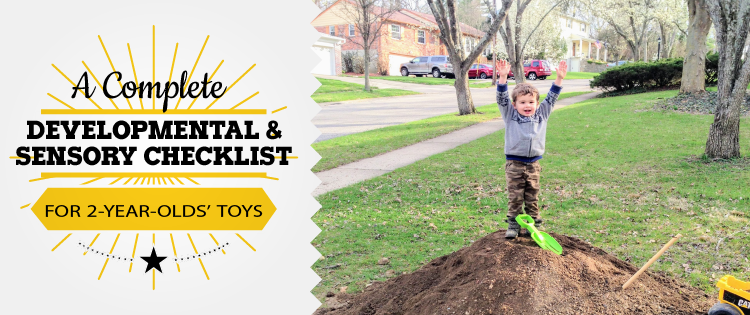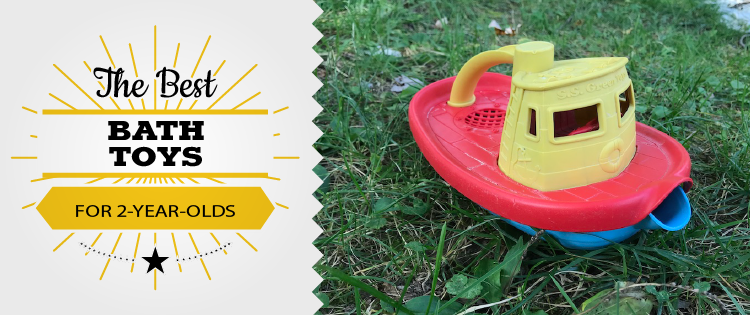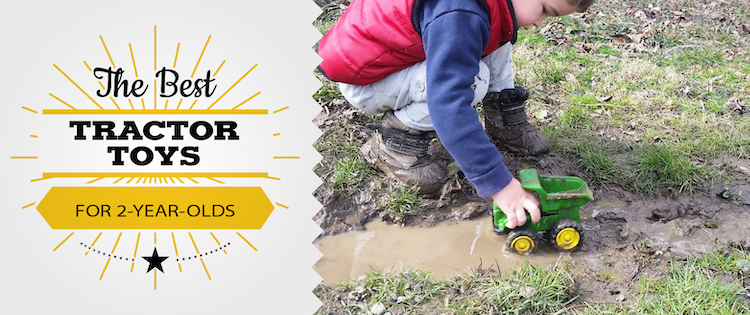Last Updated on February 18, 2022 by admin
I recently came across a Facebook thread where parents were jokingly suggesting Christmas gifts for 2-year-olds based on what their own toddlers spent the most time with. The suggestions included things like a plastic spoon, a wire whisk, and a pile of dirt.
The fact is that 2-year-olds aren’t old enough to even know what Christmas is or what birthday parties are, or remember who got them which toy for which occasion. The familiar anecdote about young kids preferring to play with the box their toys came in than the toys themselves is a familiar for a reason.
So here’s the truth, (and it’s kind of funny coming from a toy blogger): they don’t NEED any toys, technically. And they definitely don’t need as many toys as most of them end up getting when all is said and done.
But toys are a reality in our modern Western world. They’re also part of our culture of holiday gift-giving, and even if we don’t love that, it’s difficult to change in the short-term. Besides, frankly, toys do make childhood extra fun (even if they do curse us with clutter).
So yes, most of us will end up investing in plenty of toys — but it’s easy to get overwhelmed by the sheer number of toys and other products that are marketed toward toddlers.
I’ve come to the conclusion that the key to getting a well-rounded, balanced toy collection in your home is thinking about toys through the lens of natural human skills and abilities. If you know which activities your toddler’s brain craves as it grows, you’ll have a better idea of which types of toys they’ll enjoy — and you can make sure you’re exposing them to the full spectrum.
Multiple Intelligences and Developmental Milestones
I first heard of Howard Gardner’s Multiple Intelligences theory years ago, and it helped me reframe the way I think about childhood education. Gardner argues that there are 8 types (or “modalities”) of natural intelligences. Here they are:
- Verbal – The ability to use of words and language, including the use of symbols to represent ideas
- Logical/Mathematical – The ability to recognize patterns, solve puzzles, and run experiments
- Visual/Spatial – The ability to represent ideas visually and navigate visual representations like maps and diagrams
- Intrapersonal – The ability to assess one’s own feelings and analyze ideas
- Interpersonal – The ability to understand others’ feelings and emotions, develop positive relationships, and work well with others
- Physical – The ability to use the body in precise ways, including for athletics and handwork
- Musical – The ability to understand and create music, naturally recognizing things like structure and tone
- Naturalistic – The ability to connect to the natural world, identifying things like plants and animals
Gardner has a specific set of physiological and psychological criteria he uses to classify a modality as an “intelligence,” including the fact that some people are born with exceptional abilities in each of these intelligences. But even if you’re not a big fan of this intelligence theory, I think his categories are really useful way to summarize the natural aptitudes that we humans have.
In fact, you’ve probably noticed that when you bring your little one to the pediatrician, they’re checking for milestones in similar categories. You might see the following in pediatric reports:
- Social / Emotional – This developmental category one would correspond with both “interpersonal” and “intrapersonal” in the intelligences list.
- Large Motor – This could be seen as a subset of “physical” intelligence and includes things like walking, running, balancing, and climbing.
- Fine Motor – Another physical intelligence, this includes things like picking up small objects and holding and manipulating utensils and other tools.
- Verbal – These developmental milestones correspond with verbal intelligence in Gardner’s list. For example, doctors often check in to see if language is developing on schedule and might eventually check for things like hearing or speech problems.
Of course, your doctor isn’t going to check for your child’s aptitude for music theory or their love of the outdoors at the annual checkup, but that doesn’t mean that those things aren’t crucial parts of the human experience — and ones that some toddlers will keep at the center of their lives and livelihoods.
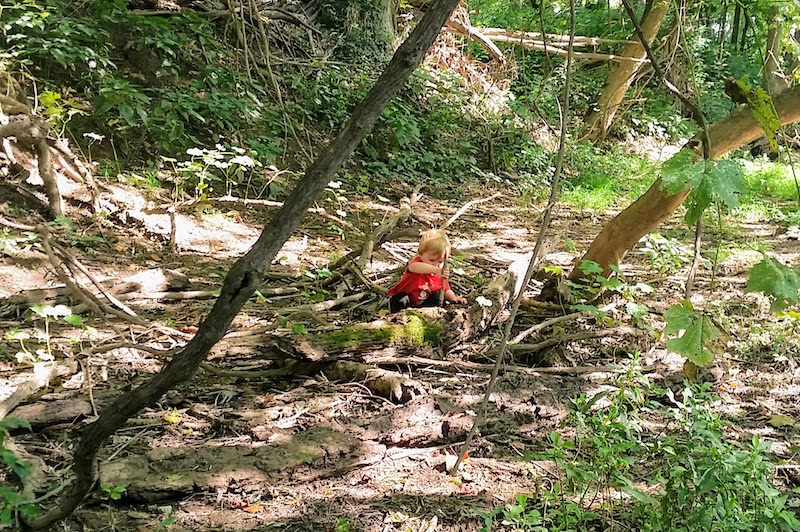
Sensory Needs
I think that for 2-year-olds and young kids, the “physical” category of intelligence deserves a few subcategories. That’s because young children are learning to use their bodies in ways that we adults tend to take for granted.
Much more than just learning to walk or run, they’re learning how to process all the data that’s coming in from all of their senses. I learned a lot about sensory issues when my young son had a sensory evaluation and a bout of occupational therapy.
Professionals categorize sensory processing in the following ways:
- Visual (Sight)
- Auditory (Hearing)
- Tactile (Touch)
- Oral (Mouth Sensations)
- Proprioceptive (Body Position) – This is how your brain interprets the input from your joints and muscles
- Vestibular (Body Movement) – This is how your brain interprets input from the inner-ear, which informs us about our bodies’ positions in space
Children can tend to be over- or under-stimulated in any of these sensory categories.
If they’re understimulated, they may seek additional sensory input to help them make sense of things. For example, they may crash into things if they’re insensitive to proprioceptive input.
If they’re overstimulated, they’ll feel overwhelmed by the sensory input and probably act out in response. For example, their grocery store tantrums might be due to the cacophony of sounds and sights in there.
Toys can play a role in providing the sensory input that toddlers crave. (A few products can help dampen stimuli for oversensitive kids, such as noise cancelling headphones or even sunglasses, but as far as toys go, most of them will be in the “providing input” category.)
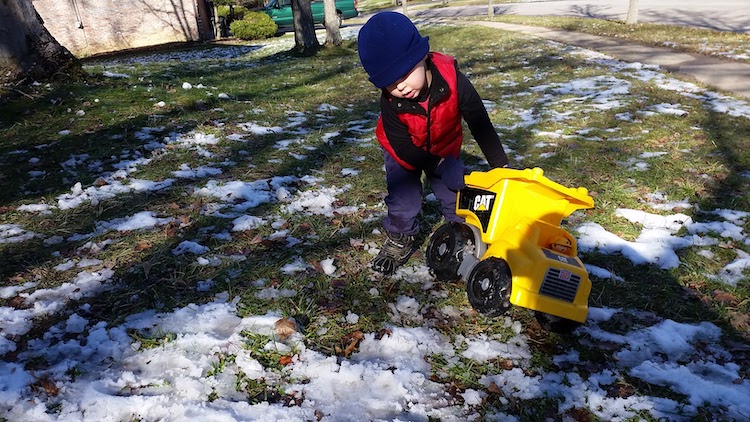
Toy Suggestions for Each Skill/Ability
With all of that in mind, I’ve identified 10 basic categories of toys that fulfill different aspects of a toddler’s learning and development. Good news: You don’t need exactly need to expect to buy 10 different types of toys for your 2-year-old, because several types of toys utilize abilities in several different developmental and sensory areas.
Let’s start by breaking down each developmental and sensory category.
As an Amazon affiliate, I earn from qualifying purchases.
1. Visual / Spatial
Any toy that encourages kids to process visual information and arrange it so that it makes sense is good for this developmental area.
- Art supplies
- Puzzles
- Blocks
- Visual input toys – visual toys like kaliedescopes or hourglasses can be great for special needs kids who crave extra visual input.
2. Logic / Math
3. Verbal
Kids will get more of what they need in this developmental area by talking to attentive grown-ups. That said, the following activities can be a nice way to supplement those natural conversations.
- Pretend Toys – Toys like a play kitchen or a tea set are great ways to get your toddler chatting and role playing.
- Games – Matching games, in particular, can help teach and reinforce new words.
- Books – Reading to your kids is one of the best ways to help them learn language.
4. Musical
I dedicated a whole post to music toys for 2-year-olds, but to sum up, good choices in this category are:
- Instruments
- Music players
- Recorders and microphones
5. Intrapersonal & Interpersonal (Social / Emotional)
This is another type of learning that comes down to interactions with other people, especially adults. But kids can work out some of their emotions and social dynamics with toys.
- Pretend Toys – In particular, sets of miniatures like Timber Tots (shown here) may encourage role playing
- Board Games – Kids will learn to manage certain emotions taking turns, and sometimes losing certain games
- Dolls and Stuffies – Toddlers may like to act out different social scenarios by nurturing a baby doll or stuffed animal
6. Large Motor: Vestibular
Toys that allow kids to spin, check balance, and assess their footing can help them learn more about their awareness of their body and its position in space. For a full list of recommendations, check out my post on Active Toys for 2-Year-Olds.
- Swings
- Spinners
- Stepping stones
- Ride-on toys (including balance bikes)
- Climbers
7: Large Motor: Proprioceptive
These toys facilitate what’s sometimes called “heavy work.” They allow kids to crash, squeeze, push, and lift to learn how their muscles work.
- Crash pads
- wagons
- wheelbarrows and sleds
- push brooms
- snow shovels
- gardening toys
- Big trucks – Mine liked to push a big dump truck around the yard, or a bulldozer through the mud
- certain pedaling toys
8. Fine Motor
2-year-olds will be working on this naturally as they work on holding their spoon and fork at meal time. Outside, they might pick up small rocks or sticks. As far as toys, go:
- Art supplies – Crayons, markers, chalk
- Fine motor toys (toys like the ones shown were developed specifically for this)
- Some blocks
9. Tactile
For more info and specific recommendations, check out the full post on tactile toys for 2-year-olds. Ideas include:
- Play doh
- Water table or play sink
- Mud kitchen
- Kitchen helper
- Sensory table
- Splash pad
10. Naturalist
As I wrote on my gift guide for outdoorsy kids, older kids who gravitate toward nature will enjoy things like magnifying glasses, binoculars, and nature journals. I’d say that for 2-year-olds, though, a good gift is one that allows them to be outdoors comfortably. Consider gifts like the following:
- Outdoor gear – Your toddler might love to receive a sleeping bag for family camping trips or a collection box for nature treasures
- Outdoor apparel – Rain suits, extra mittens, waterproof jackets, etc.
- A bug house for observing bugs (under adult supervision)
Remember: The Goal is to Observe and Understand Your Kid
I’d like to clarify that by making sure that your kids have access to toys that stimulate different parts of their brains, you’re not necessarily trying to make kids more intelligent or hit milestones faster. But exposing them to a variety of activities just may enable you to get a better idea of what kind of activities they like, and what kind of personality they have (which is honestly so exciting and fun as a parent), and, in the case of sensory activities, which activities can help them feel good in their bodies (and therefore stay emotionally regulated).

